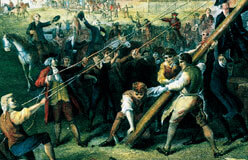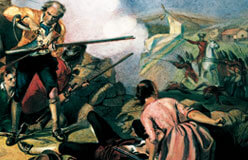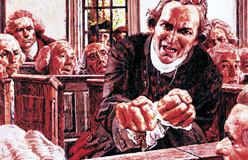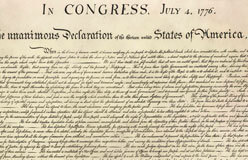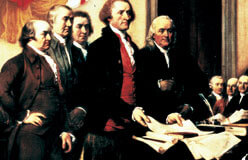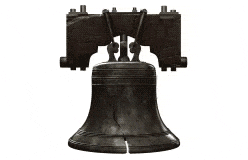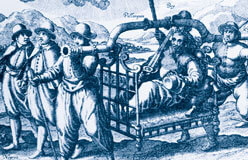In the summer of 1776, delegates to the Second Continental Congress gave Thomas Jefferson the task of telling the world why the American colonies wanted to break free from Britain.
Not only did he do that, but he also set out what the new nation would stand for. His bold and beautiful words have echoed through the centuries, influencing nations on every continent to work for their own independence. The document gave courage to Americans at home. Both African Americans and women cited the ideas of liberty and equality as they fought to end slavery and gain equal rights for all Americans.
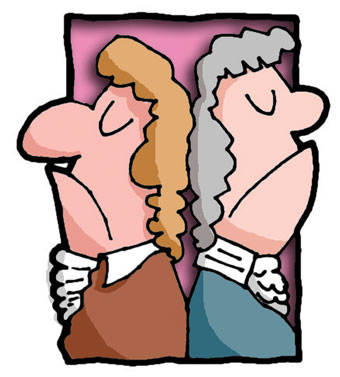
◀ Some of the delegates came to the Continental Congress still hoping King George would change his mind and let the colonists govern themselves within the British Empire. Many felt that people needed more time to get used to the idea of separating from Britain. John Adams and others favored immediate independence. John Dickinson did not. Adams and Dickinson fought so bitterly over this issue that they never spoke to each other for the rest of their lives.
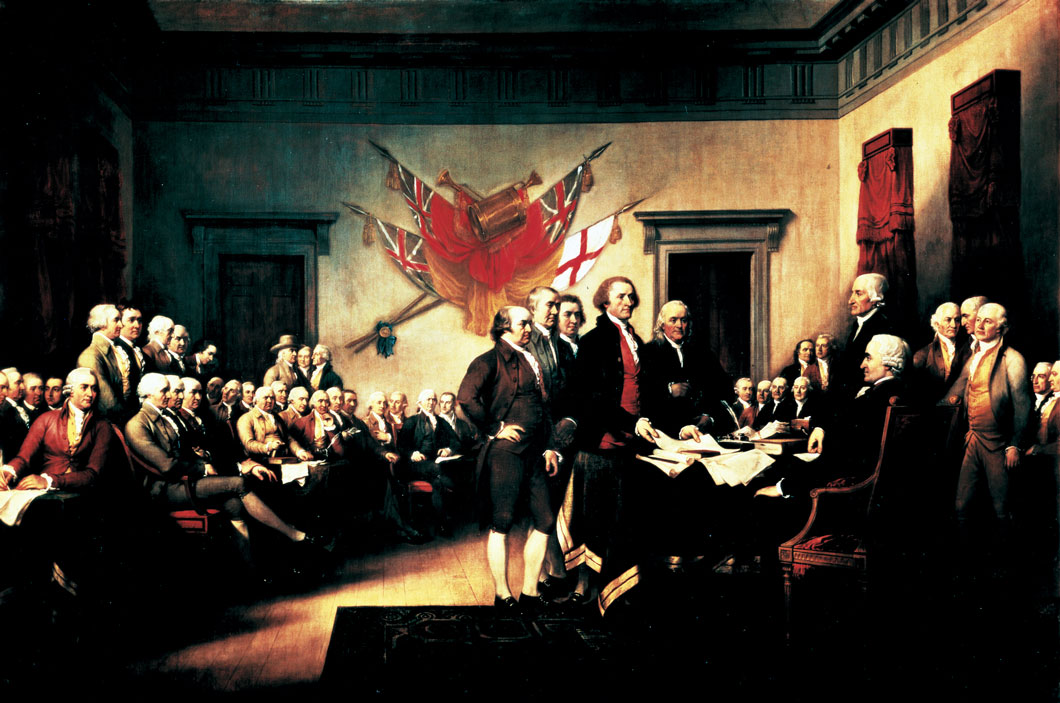
▲ In June, the Continental Congress chose a committee of five to write a document that would explain to King George why the colonists wanted to be free. This famous painting shows these men presenting the Declaration to John Hancock, president of the Congress. Hancock is seated. From left to right, the men standing in front of the desk are John Adams, Roger Sherman, Robert Livingston, Thomas Jefferson, and Benjamin Franklin.
◀ On July 2, 1776, the delegates voted the 13 colonies “free and independent states.” Two days later, they voted to approve the Declaration of Independence. The first part of the Declaration contains the beliefs on which our country was founded:
1. People are born with certain rights, which include life, liberty, and the right to seek happiness.
2. People have the right to form their own government, which they should choose, and its purpose should be to protect the rights of citizens.
3. If government fails to protect people’s rights, people have the right to change it.
John Hancock signed the Declaration first. He said he would sign his name so large that King George would be able to read it without his glasses. Hancock became so famous for the signature that today we still refer to signing a paper as “putting your John Hancock on it.” The Declaration wasn’t signed by other delegates until early August. One delegate even waited until 1781.
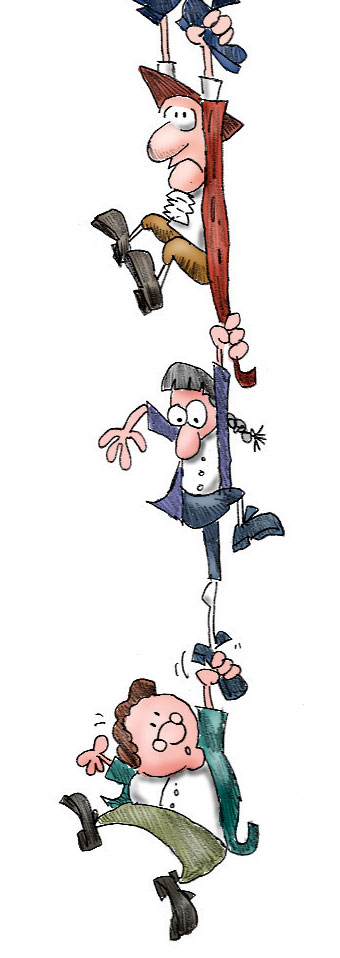
◀ Signing the Declaration was an act of courage. The signers were considered traitors to Britain. A traitor is someone who betrays his or her country. If they were caught by the British, they could be hanged. Ben Franklin was only half joking when he told the delegates, “Now we must all hang together, or assuredly we shall all hang separately.”

